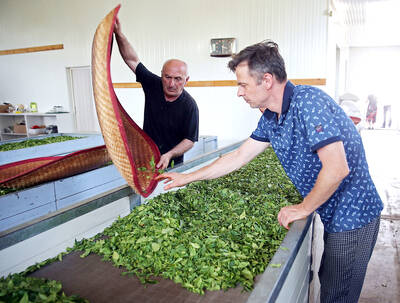The embattled landlord at the center of Sweden’s property crisis might look to sell the company following a plunge in the share price.
Samhallsbyggnadsbolaget i Norden AB (SBB) has initiated a strategic review that could result in “a sale of the company, business segments, or specific assets, as well as other strategic transactions,” the board of directors said in a statement.
Selling new shares is not in the scope of the review.
A sale of the company would mark a major reversal of fortunes for SBB chief executive Ilija Batljan, who in seven years built up a US$13 billion portfolio of social housing and municipal properties across the Nordic region.
“The board believes that the underlying share value in the business is significantly higher than SBB’s current market value,” Batljan said by telephone. “Because of this you have to look at the options that maximize shareholder value.”
Key to SBB’s aggressive growth had been a debt splurge that relied on cheap financing on the bond markets.
However, with bond yields — and hence borrowing costs — jumping higher, the company’s US$8 billion debt pile suddenly became unsustainable. Facing calls from investors and credit rating firms to cut leverage, the firm pledged to sell 6 billion kronor (US$554.4 million) of assets to shore up its balance sheet.
However, the efforts to conserve cash did not go far enough, which Batljan also acknowledged.
The target of 6 billion kronor “is very little in relation to a balance sheet of 160 billion kronor,” he said.
It is an assessment shared by the companies responsible for SBB’s public credit ratings. This month has seen the landlord stripped of its investment grade credit status — a vital tool to unlock cheap financing — at both S&P Global Rating and Fitch Ratings.
The move by S&P on May 8 sparked panic among investors and led to a 40 percent slump in the share price. SBB was forced to postpone its dividend and scrap plans for an emergency sale of shares to shore up liquidity.
SBB’s “current financial constraints stem from receiving forms of deferred payments for assets devolved from the group, rather than immediate cash proceeds to deleverage,” Fitch said after the market closed on Friday, having cut the landlord’s rating one step to “BB+.”
“What has led to the situation is the level where the company’s shares are traded,” Batljan said. “[SBB’s] market value deviates very strongly from the intrinsic value of our equity.”
“If we sell the entire company, we will want a very good price,” he added.

When Lika Megreladze was a child, life in her native western Georgian region of Guria revolved around tea. Her mother worked for decades as a scientist at the Soviet Union’s Institute of Tea and Subtropical Crops in the village of Anaseuli, Georgia, perfecting cultivation methods for a Georgian tea industry that supplied the bulk of the vast communist state’s brews. “When I was a child, this was only my mum’s workplace. Only later I realized that it was something big,” she said. Now, the institute lies abandoned. Yellowed papers are strewn around its decaying corridors, and a statue of Soviet founder Vladimir Lenin

UNCERTAINTIES: Exports surged 34.1% and private investment grew 7.03% to outpace expectations in the first half, although US tariffs could stall momentum The Chung-Hua Institution for Economic Research (CIER, 中華經濟研究院) yesterday raised its GDP growth forecast to 3.05 percent this year on a robust first-half performance, but warned that US tariff threats and external uncertainty could stall momentum in the second half of the year. “The first half proved exceptionally strong, allowing room for optimism,” CIER president Lien Hsien-ming (連賢明) said. “But the growth momentum may slow moving forward due to US tariffs.” The tariff threat poses definite downside risks, although the scale of the impact remains unclear given the unpredictability of US President Donald Trump’s policies, Lien said. Despite the headwinds, Taiwan is likely

UNIFYING OPPOSITION: Numerous companies have registered complaints over the potential levies, bringing together rival automakers in voicing their reservations US President Donald Trump is readying plans for industry-specific tariffs to kick in alongside his country-by-country duties in two weeks, ramping up his push to reshape the US’ standing in the global trading system by penalizing purchases from abroad. Administration officials could release details of Trump’s planned 50 percent duty on copper in the days before they are set to take effect on Friday next week, a person familiar with the matter said. That is the same date Trump’s “reciprocal” levies on products from more than 100 nations are slated to begin. Trump on Tuesday said that he is likely to impose tariffs

HELPING HAND: Approving the sale of H20s could give China the edge it needs to capture market share and become the global standard, a US representative said The US President Donald Trump administration’s decision allowing Nvidia Corp to resume shipments of its H20 artificial intelligence (AI) chips to China risks bolstering Beijing’s military capabilities and expanding its capacity to compete with the US, the head of the US House Select Committee on Strategic Competition Between the United States and the Chinese Communist Party said. “The H20, which is a cost-effective and powerful AI inference chip, far surpasses China’s indigenous capability and would therefore provide a substantial increase to China’s AI development,” committee chairman John Moolenaar, a Michigan Republican, said on Friday in a letter to US Secretary of